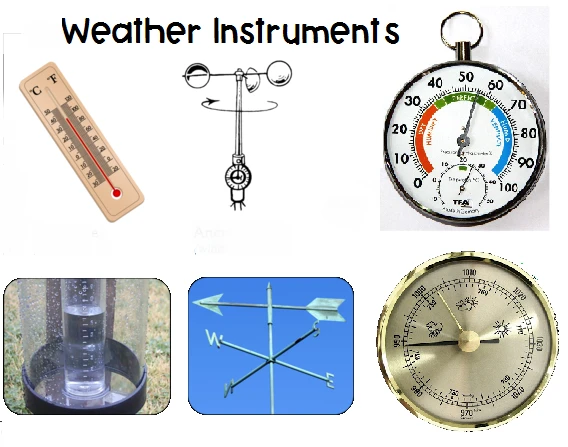
# Weather Instruments: Tools for Measuring Atmospheric Conditions
## Introduction to Weather Instruments
Weather instruments are essential tools used by meteorologists, scientists, and weather enthusiasts to measure various atmospheric conditions. These devices help us understand and predict weather patterns, which is crucial for agriculture, aviation, and daily life planning.
## Common Types of Weather Instruments
### Thermometer
The thermometer is perhaps the most familiar weather instrument. It measures air temperature, typically using mercury or alcohol in a glass tube or digital sensors in modern versions.
### Barometer
A barometer measures atmospheric pressure, which helps predict short-term weather changes. There are two main types:
– Mercury barometers
– Aneroid barometers
### Hygrometer
This instrument measures humidity – the amount of water vapor in the air. Modern hygrometers often use electronic sensors to provide accurate readings.
### Anemometer
Anemometers measure wind speed. The most common type has three or four cups that rotate with the wind, while more advanced versions use ultrasonic sensors.
### Rain Gauge
A simple but important tool, the rain gauge collects and measures precipitation over a set period. Modern versions can automatically record and transmit data.
### Weather Vane
Also called a wind vane, this instrument shows wind direction. The arrow points into the wind, indicating where the wind is coming from.
## Advanced Weather Measurement Tools
### Weather Balloons
These carry instrument packages called radiosondes high into the atmosphere to measure temperature, humidity, pressure, and wind at various altitudes.
### Weather Satellites
Orbiting satellites provide comprehensive data about cloud cover, storm systems, and other large-scale weather phenomena.
### Doppler Radar
This specialized radar can detect precipitation, measure its intensity, and determine wind patterns, making it invaluable for severe weather warnings.
## Importance of Weather Instruments
Accurate weather data collected by these instruments helps in:
– Severe weather warnings
– Climate research
– Agricultural planning
– Aviation safety
– Energy production forecasting
## Maintaining Weather Instruments
For accurate measurements, weather instruments require:
– Regular calibration
– Proper placement (away from obstructions)
– Routine cleaning and maintenance
– Protection from extreme conditions
## Conclusion
From simple thermometers to sophisticated satellite systems, weather instruments provide the data needed to understand our atmosphere. As technology advances, these tools continue to improve, offering more precise measurements and better weather predictions for everyone.
Keyword: instruments of the weather